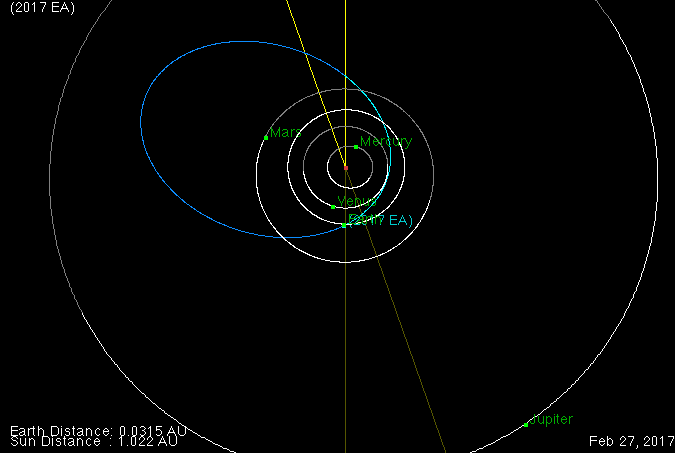




A small near-Earth asteroid less than 3 meters (10 feet) across whizzed safely past Earth today at a distance so close that it passed well inside the ring of geosynchronous satellites. Designated 2017 EA, the asteroid made its closest approach to Earth at 6:04 a.m. PST (9:04 a.m. EST / 14:04 UTC) at an altitude of only 14,500 kilometers (9000 miles) above the eastern Pacific Ocean. At its closest point, this asteroid was 20 times closer than the Moon; it then quickly moved into the daytime sky and can no longer be observed by ground-based telescopes.
2017 EA was originally detected only 6 hours before closest approach by astronomers at the NASA-funded Catalina Sky Survey, near Tucson, Arizona. It was observed by several other observatories before it passed into the Earth’s shadow just before closest approach.
Even though 2017 EA was tracked for only a single day, its orbit is now known quite accurately. Computations by CNEOS indicate that the asteroid will not approach our planet this close again for at least a hundred years.
